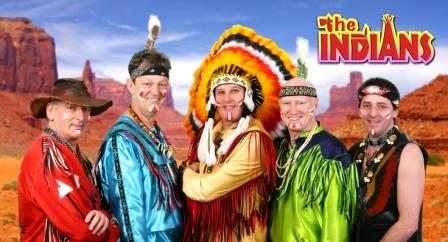An Open Letter to Racebending.com Detractors
By Michael Le
In a given week, the average American child spends less than forty minutes in meaningful conversation with their parents. In the same week, he or she will also spend sixteen hundred and eighty minutes watching television.
In a given year, an American child will spend 900 hours in school--and 1500 hours watching television. (Source: http://www.csun.edu/science/health/docs/tv&health.html by Norman Herr, PhD Professor of Science and Education)
Clearly, children spend a great deal of time consuming media. It helps shape how they view the world and themselves. In the states, we find it very easy to fight the gender stereotypes they may be exposed to. We tell our daughters that they can grow up to be doctors or lawyers or presidents, and that they are just as capable as any boy.
But in America, we’re very skittish about the subject of race. We like to stick to vague statements like “Everybody is equal”--a lofty and admirable statement, to be sure, but abstract and tough for a child to grasp.
When we don’t talk to our children about race, they draw their own conclusions, and one of their main sources of information about the world is media.
The kind of concepts children internalize about themselves is demonstrated in a study known as the doll test, initially conducted to help end segregation in the states, and performed again in more recent years:
http://www.racebending.com/v3/background/do-children-see-race/
Children's views of race are shaded by the world they live in
Forty years beyond the Civil Rights movement, syndicated columnist Leonard Pitts Jr. marvels at how the world still shapes how young children view issues of race in a way that is not equal.
By Leonard Pitts Jr
CNN's study was similar, except that children were presented with pictures, not actual dolls, and the images ran a color gamut from very light to very dark. One other difference: CNN tested white children along with black ones.
Which is how this little 5-year-old white girl in Georgia came to be sitting at a table facing an unseen researcher as her mother sat with O'Brien and watched on video. Asked to point out the "good child," she touched one of the lighter skinned figures. Why is that the good child, she was asked. "Because I think she looks like me," the little girl said.
Asked to point out the "bad child," she touched the darkest image on the paper. And why is that the bad child? "Because she's a lot darker," the little girl said.
Thus, it is no surprise that CNN found both black and white kids maintain a decided bias toward whiteness. For instance, 76 percent of younger white kids pointed to the darker figures when asked to identify "the dumb child." Because this is a pilot study, those results are not definitive. But they are instructive.
So is this: A few months ago, a white teacher brought a black girl up to me as I was preparing to give a speech. The teacher wanted me to talk to her. She doesn't think she is beautiful, said the teacher, because she is dark. I asked the girl if this was true and in a soft voice, with eyes averted, she said that it was.
And man, what do you say to that? How do you explain the psychology of self-loathing and the futility of judging oneself by someone else's beauty standards, and the cumulative psychological weight of 400 years of being told you are not good enough and the need to embrace and love and value yourself just as you are?
For more on the subject, see Stereotypes Teach Natives They're Inferior, Stereotypical Thinking Causes Racist Results, and The Harm of Native Stereotyping: Facts and Evidence.
Below: Some reasons why too many Native children feel like inferior, second-class citizens. And thus why too many overeat, do poorly in school, join gangs, get high, commit crimes, get depressed, and kill themselves.





2 comments:
You said "Stereotypes come from somewhere other than the media? Wrong."
Well, the others are pretty cut and dried. But not this one. Stereotypes unfortunately are passed from parent to child, child to child .... as well as being passed through media.
By the way, your email account is down.
If parents or teachers repeat what they learned in the media to children, I'd still call that a case of media transference.
Sure, some parents may tell family stories about Indians that have no connection to the media, but these cases must be few and far between. I monitor the Native news and read the stereotype stories, and I don't recall any examples like that.
P.S. Any e-mail problems are undoubtedly temporary. Try me again later.
Post a Comment